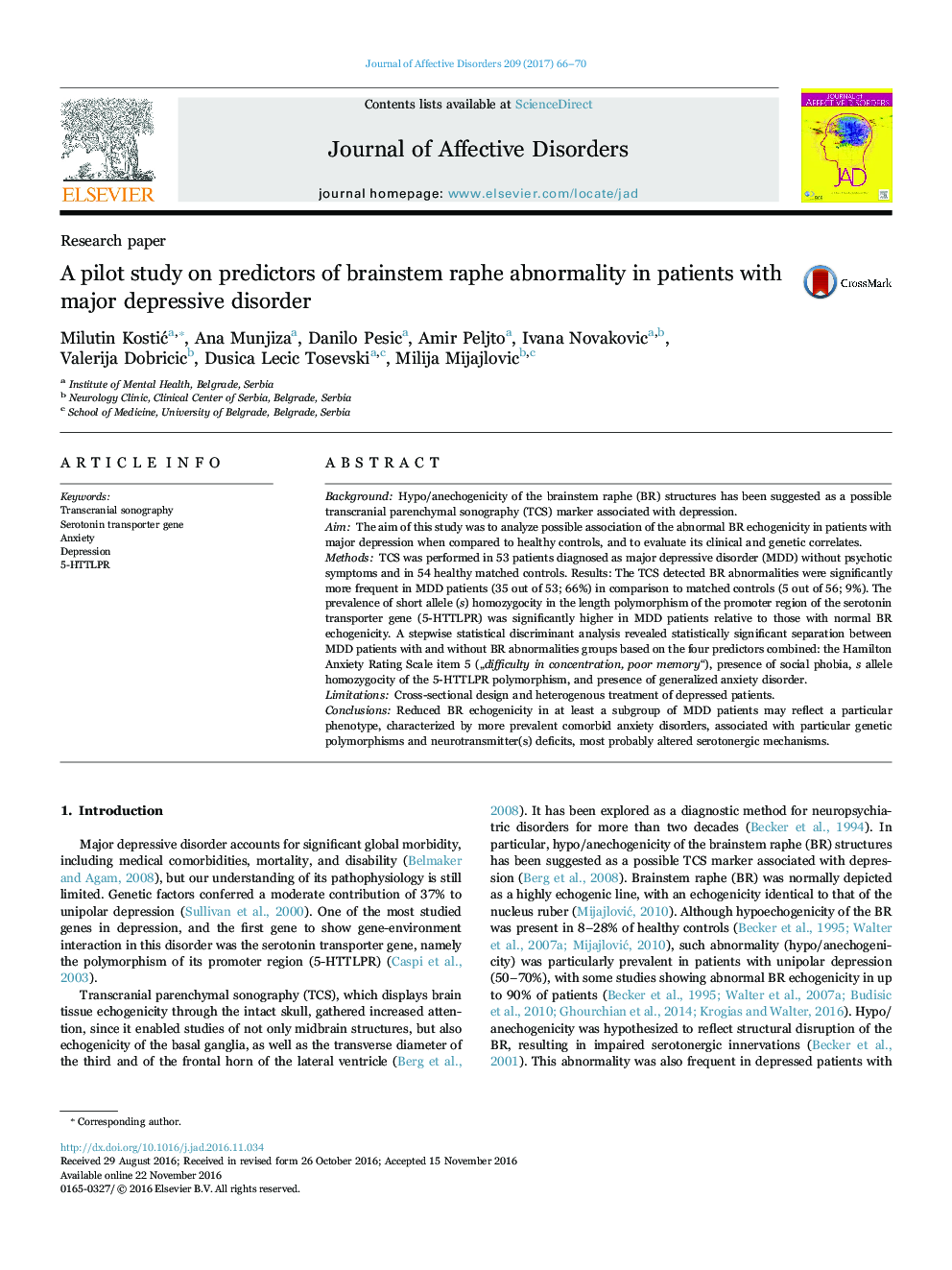| کد مقاله | کد نشریه | سال انتشار | مقاله انگلیسی | نسخه تمام متن |
|---|---|---|---|---|
| 5722268 | 1608116 | 2017 | 5 صفحه PDF | دانلود رایگان |
- Significantly more frequent brain raphe hypoechogenicity in depressed patients.
- Discriminant analysis revealed predictors of abnormal brain raphe echogenicity.
- A subgroup of depressed patients is proposed to lead to brain raphe hypoechogenicity.
BackgroundHypo/anechogenicity of the brainstem raphe (BR) structures has been suggested as a possible transcranial parenchymal sonography (TCS) marker associated with depression.AimThe aim of this study was to analyze possible association of the abnormal BR echogenicity in patients with major depression when compared to healthy controls, and to evaluate its clinical and genetic correlates.MethodsTCS was performed in 53 patients diagnosed as major depressive disorder (MDD) without psychotic symptoms and in 54 healthy matched controls. Results: The TCS detected BR abnormalities were significantly more frequent in MDD patients (35 out of 53; 66%) in comparison to matched controls (5 out of 56; 9%). The prevalence of short allele (s) homozygocity in the length polymorphism of the promoter region of the serotonin transporter gene (5-HTTLPR) was significantly higher in MDD patients relative to those with normal BR echogenicity. A stepwise statistical discriminant analysis revealed statistically significant separation between MDD patients with and without BR abnormalities groups based on the four predictors combined: the Hamilton Anxiety Rating Scale item 5 (âdifficulty in concentration, poor memory“), presence of social phobia, s allele homozygocity of the 5-HTTLPR polymorphism, and presence of generalized anxiety disorder.LimitationsCross-sectional design and heterogenous treatment of depressed patients.ConclusionsReduced BR echogenicity in at least a subgroup of MDD patients may reflect a particular phenotype, characterized by more prevalent comorbid anxiety disorders, associated with particular genetic polymorphisms and neurotransmitter(s) deficits, most probably altered serotonergic mechanisms.
Journal: Journal of Affective Disorders - Volume 209, February 2017, Pages 66-70
